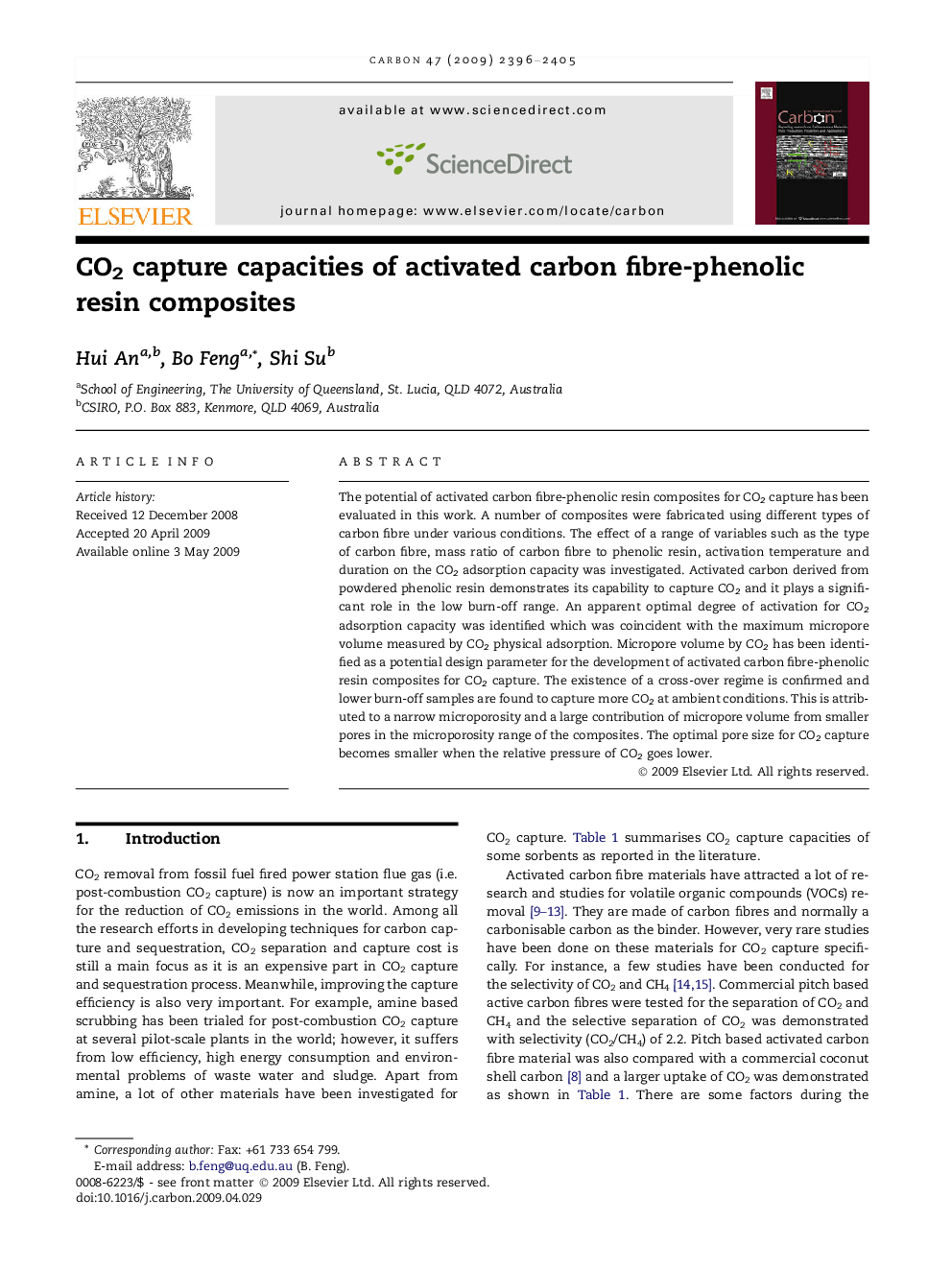| Article ID | Journal | Published Year | Pages | File Type |
|---|---|---|---|---|
| 1416411 | Carbon | 2009 | 10 Pages |
The potential of activated carbon fibre-phenolic resin composites for CO2 capture has been evaluated in this work. A number of composites were fabricated using different types of carbon fibre under various conditions. The effect of a range of variables such as the type of carbon fibre, mass ratio of carbon fibre to phenolic resin, activation temperature and duration on the CO2 adsorption capacity was investigated. Activated carbon derived from powdered phenolic resin demonstrates its capability to capture CO2 and it plays a significant role in the low burn-off range. An apparent optimal degree of activation for CO2 adsorption capacity was identified which was coincident with the maximum micropore volume measured by CO2 physical adsorption. Micropore volume by CO2 has been identified as a potential design parameter for the development of activated carbon fibre-phenolic resin composites for CO2 capture. The existence of a cross-over regime is confirmed and lower burn-off samples are found to capture more CO2 at ambient conditions. This is attributed to a narrow microporosity and a large contribution of micropore volume from smaller pores in the microporosity range of the composites. The optimal pore size for CO2 capture becomes smaller when the relative pressure of CO2 goes lower.
